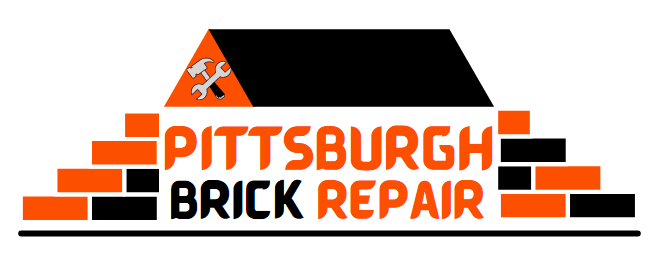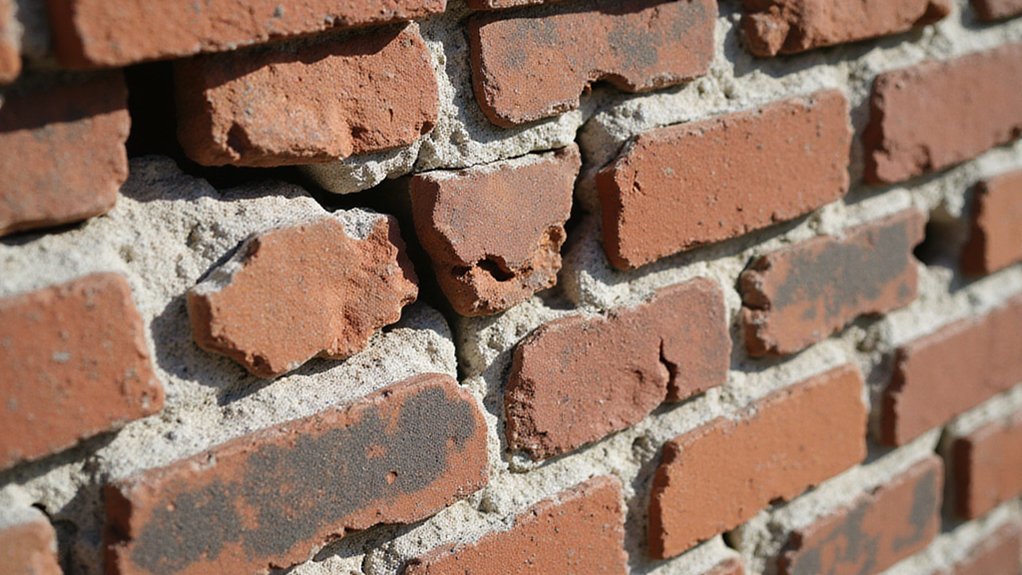Your retaining wall isn’t just a terrain element—it’s a critical structural element protecting your property from erosion and potential damage. When you start noticing cracks, leaning, or deteriorating mortar, you’ll want to pay attention. These signs could indicate serious underlying issues that won’t fix themselves. While DIY repairs might seem tempting, complex structural problems demand professional skill. Wondering if your wall’s condition warrants expert intervention? Let’s investigate the warning signs that signal it’s time to call in the masonry professionals.
Understanding Structural Warning Signs
When it comes to retaining wall maintenance, recognizing early structural warning signs can save you significant time, money, and stress. You’ll want to watch for telltale indicators like crumbling foundation, which suggests serious underlying damage.
Uneven settling can signal potential structural compromise, indicating your wall might need professional intervention. Visible cracks, bulging sections, or leaning walls aren’t just cosmetic issues—they’re red flags demanding immediate attention. Foundation repair experts in Pittsburgh recommend addressing masonry issues promptly to prevent more extensive structural damage.
Types of Retaining Wall Damage
Like a silent sentinel, a retaining wall bears the weight of earth, soil, and structural stress, making it susceptible to various types of damage. You might notice mortar deterioration, which weakens the wall’s integrity and allows moisture to infiltrate. Chimney repair professionals in Pittsburgh understand that exterior brick masonry can help diagnose and address similar structural issues in retaining walls. Cracks in brickwork are another common issue, signaling potential structural problems that could compromise your wall’s stability. Bulging, leaning, or shifting sections indicate significant stress, while crumbling or eroding masonry suggests long-term wear. Understanding these damage types helps you recognize when professional intervention becomes essential for maintaining your retaining wall’s strength and preventing costly repairs.
Risk Assessment and Potential Consequences
Because retaining wall damage can escalate quickly, evaluating potential risks becomes a critical step in preventing catastrophic structural failure. You’ll want to carefully assess safety hazards that could threaten your property and personal well-being.
Unaddressed wall deterioration might lead to extensive property damage, including soil erosion, foundation instability, and potential structural collapse. If left unchecked, small cracks and minor shifts can convert, morph, or transition into major structural issues that are expensive and dangerous to repair.
Your proactive approach can save you significant time, money, and stress in the long run.
DIY vs. Professional Repair Considerations
Understanding the potential risks of retaining wall damage sets the stage for ascertaining the most appropriate repair approach. While DIY challenges can seem tempting to tackle, professional knowledge often saves time and prevents costly mistakes. Material selection alone requires specialized insight that most homeowners don’t possess.
You’ll want to ponder structural integrity, potential safety risks, and long-term durability when deciding between a DIY fix or hiring professionals. Experienced masons can quickly diagnose underlying issues and provide holistic solutions that protect your property’s value and structural stability.
Evaluating Repair Complexity and Cost
Some retaining wall repairs are straightforward, while others demand complex technical knowledge and significant financial investment. When evaluating repair complexity, you’ll need to take into account several indispensable factors:
- Material costs and availability
- Labor requirements and skill level
- Structural integrity of the existing wall
Your repair approach depends on the damage extent and wall type. Minor cracks might be a DIY project, but extensive structural issues require professional intervention.
Material costs can quickly escalate, and labor requirements can be more intricate than anticipated. By carefully examining the damage and your personal capabilities, you’ll make a smart, cost-effective decision that guarantees your retaining wall’s longevity and safety.
Selecting the Right Masonry Repair Expert
When traversing the complex world of retaining wall repairs, finding the right masonry specialist can make all the difference between a lasting solution and a costly mistake. You’ll want to prioritize contractor qualifications that demonstrate proven proficiency.
Look for professionals with extensive experience in retaining wall restoration, valid licensing, and positive customer reviews. Check their portfolio of past projects and verify their ability to assess repair material quality. Don’t hesitate to ask for references and detailed quotes.
A trustworthy authority will transparently discuss your wall’s specific needs, potential challenges, and recommended repair strategies.
Preventative Maintenance Strategies
After selecting a skilled masonry repair expert, proactive maintenance becomes your best defense against costly retaining wall deterioration. By implementing strategic preventative measures, you’ll safeguard your investment and guarantee long-term structural integrity.
Your preventative maintenance strategy should include:
- Regular inspections to detect early signs of damage
- Seasonal preparations for weather-related stress
- Timely drainage management around wall foundations
Consistent monitoring helps identify potential issues before they escalate, saving you significant repair expenses. You’ll feel more confident knowing your retaining wall remains strong, stable, and resilient against environmental challenges.
Long-Term Retaining Wall Performance and Care
Because retaining walls represent significant structural investments, understanding their long-term performance requires a thorough approach to maintenance and care. You’ll want to monitor your wall’s load bearing capacity and assess soil conditions regularly to prevent potential failures.
Professional inspections every few years can help you catch early signs of stress or deterioration. By staying proactive, you’ll extend your wall’s lifespan and protect your property from potential structural damage. Your commitment to consistent maintenance guarantees your retaining wall remains strong, stable, and reliable for years to come.
Frequently Asked Questions
How Long Does a Typical Retaining Wall Masonry Repair Take?
You’ll find most retaining wall repairs take 2-3 days, depending on damage extent. Proper repair techniques and skilled professionals maintain your project’s timeline stays efficient and your wall’s structural integrity continues strong.
Can I Repair a Leaning Retaining Wall Myself?
You can attempt DIY masonry techniques for minor wall leaning, but complex structural issues require professional intervention. Proper wall bracing necessitates proficiency to preclude potential collapse and guarantee long-term stability.
What Is the Average Cost of Professional Masonry Wall Repairs?
Professional masonry wall repairs typically range from $500 to $3,000, depending on your wall’s damage severity, material type, and complexity. Your repair costs will vary based on specific project needs and local labor rates.
Will My Homeowner’s Insurance Cover Retaining Wall Damage?
Your insurance policy details vary, but many homeowners’ policies don’t automatically cover retaining wall coverage. You’ll need to review your specific policy and potentially add extra protection for extensive/substantial/thorough wall damage.
How Often Should I Inspect My Retaining Wall for Potential Issues?
You’ll want to carry out routine visual inspections twice yearly—spring and fall—and perform seasonal wall assessments after major weather events to catch potential structural issues before they become costly problems.

